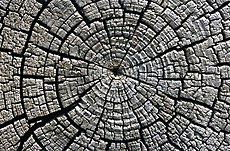Aztec Ruins National Monument
| Aztec Ruins National Monument | ||
|---|---|---|
| Aztec Ruins - West Ruin | ||
|
|
||
| Location: | New Mexico , United States | |
| Next city: | Aztec ( New Mexico ) | |
| Surface: | 1.3 km² | |
| Founding: | January 24, 1923 | |
The Aztec Ruins [ æstek ˌrʊːns ] (German Aztec ruins ) form a cultural and historical memorial of the type of a national monument in the northwestern part of the US state New Mexico , in which several well-preserved ruins of early pueblos are protected. The stand-alone complexes include Hubbard Site , Mound F , East Ruin , Earl Morris Ruin and West Ruin , only the latter of which is open to the public.
Contrary to what the name suggests, the pueblos were not built by the Aztecs , but erroneously named after them. Early settlers, remembering tales of the conquest of Mexico , believed that they were built by them. The national monument is located not far from the Colorado border in Aztec , New Mexico , which can be reached from Durango in the north and Albuquerque in the south via Highway 550.
history
discovery
The first records were made in 1859 by the geologist Dr. John S. Newberry, who found the pueblos relatively well preserved at the time. In the following 50 years, however, they fell victim to isolated looting. When the anthropologist Lewis H. Morgan came to this site in 1878 , he found that about a quarter of the stones had been removed by settlers to be reused as building material. Only when the land came into private ownership in 1889 was it relatively spared from further destruction and finally came under national protection when it was designated a national monument in 1923.
Earl Halstead Morris directed the first systematic excavations in the late 1920s. He spent the following seven years excavating the West Ruin, the Great Kiva and some rooms in the East Ruin . Among other things, he discovered not only differences in architectural style but also that there must have been two different periods of settlement. In 1930, under his supervision, the reconstruction of the Great Kiva - a ceremonial room typical of the Pueblo culture - began, which was completed four years later. In 1923 the ruins were designated as a National Monument.
colonization

Around 1111, the first settlement was built on this site, which today forms the western ruin. Its construction is similar to that in Chaco Canyon . It had three floors, comprised over 400 rooms and several kivas, including the great kiva. In the following decades the settlement developed into a center of trade and ceremonial events. With the disappearance of the Chaco culture, however, this was already in decline around 1150. In addition, there were the effects of a period of drought.
The second phase of settlement began around 1200. The pueblo was partially redesigned and existing unfinished buildings completed. At that time, a second settlement was built a little apart, today's East Ruin . The construction of these and the conversions are similar to the structures in Mesa Verde National Park . Pottery finds also indicated a connection to this culture.
Around 1300 people left Aztec. The exact reasons for this are not known; possible causes could have been another drought or lack of raw materials.
Web links
- National Park Service: Aztec Ruins National Monument (official site; English)

